This Ultra-Wide Is Really Beautiful: Canon RF 14-35mm F4 L Review
Ultra-wide lenses require big, heavy glass. That’s even more true for zooms, which can easily begin to approach the weight of a telephoto. But the new Canon RF 14-35mm f4 L IS USM weighs just over a pound, and includes stabilization. With the L in the name and a $1,699 price tag, however, Canon’s new ultra-wide mirrorless lens has a lot to live up to.
I spent some time photographing fall landscapes with the Canon RF 14-35mm f4 L IS USM on the EOS R6. With excellent sharpness and stabilization, this lens might just be a landscape lover’s dream. That price, however, may be a sticking point.
Too Long, Didn’t Read
The Canon RF 14-35mm f4 L is lightweight and well-built. There’s little to complain about in the autofocus and stabilization performance. It captures stunning JPEGs, but also captures some significant corner bending vignetting at 14mm that’s going to need lens profile corrections (not yet supported in Lightroom or Capture One as of writing this review).
Canon RF 14-35mm f4 L IS USM Review Pros and Cons
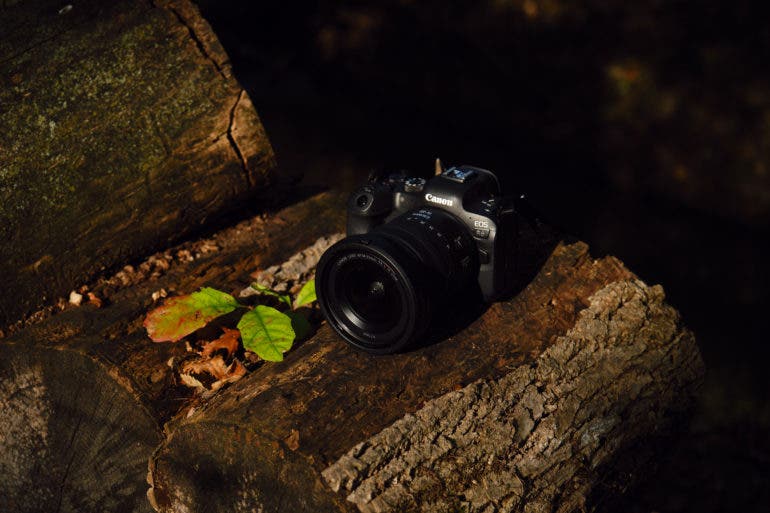
Pros
- Compact and lightweight
- Weather-sealed
- 5 stops of stabilization, 7 with IBIS bodies
- Extra control ring
- Beautiful color
- Close focusing capabilities
Cons
- $1,699
- Some correction needed for RAW files for barrel distortion and vignetting
- Control rings can be hard to differentiate at first
Gear Used
I paired the Canon RF 14-35mm f4 L with the EOS R6. I used this set-up primarily for landscapes.
Innovations
Ultra-wide optics tend to be either stabilized or lightweight, but not both. The Canon RF 14-35mm f4 L has 5.5 stops of stabilization, or 7 with IBIS bodies, yet only weighs 1.2 pounds. Comparatively speaking, there’s not really a lens like it. There are other ultra-wide zooms, but none have this mix of stabilization and portability.
“With excellent sharpness and stabilization, this lens might just be a landscape lover’s dream.”
Canon RF 14-35mm f4 L Tech Specs
Canon lists the following tech specs for this lens:
- Focal Length: 14-35mm
- Maximum and Minimum Aperture: F4-F22 (at all zoom settings)
- Lens Mount Type: RF Mount; Metal Mount
- Minimum Focusing Distance: 7.9 in. (0.2m), at all zoom settings
- Maximum Magnification: 0.38x, at 35mm zoom setting (Fill frame with subject approx. 3.7 x 2.5 inches / 94 x 63mm in size, at 35mm zoom position)
- Angle of View (Diagonal): 114°00’ – 63°00′
- Lens Construction: 16 elements in 12 groups
- Special Elements: Three UD-glass elements, three Aspherical elements, Includes one UD Aspherical lens element
- Lens Coating
- Canon SSC (Super Spectra Coating)
- Canon SWC (Sub-wavelength Structure Coating)
- Canon ASC (Air Sphere Coating)
- Fluorine coating on front surface of front element
- Filter Size Diameter: Ø77mm
- Aperture Blades: 9; circular shape
- Lens Switches: AF/MF switch, Stabilizer ON/OFF switch
- Dust/Water Resistance: Weather-resistant seals at lens mount, switches, zoom ring, focus ring, and Control Ring
- Focusing System: Nano USM; rear focusing system, Dual Pixel CMOS AF Coverage. EOS R, RP – approx. 88% (horizontal) x 100% (vertical). EOS R5, R6 Approx. 100% horizontal and vertical. Face Detect + Tracking – approx. 100% x 100%
- Full-time Manual Focusing: Yes (One-Shot AF only)
- Control Ring: Yes
- Click-stops provided (60 clicks/full revolution)
- Click stops can be removed by Canon service facility, for a service fee.
- IS Mode Selection: None (automatic panning detection provided)
- Optical Image Stabilization: 5.5 stops optical IS correction with EOS R and RP. Conforms to CIPA test standards, using EOS R.
- Coordinated IS (with EOS R5, R6): Up to 7 stops Coordinated IS correction. Conforms to CIPA test standards, using EOS R5
- Maximum Outer Diameter x Length: Approx. Φ3.3 in. x 3.9 in. (approx. Φ84.1mm x 99.8mm), Minimum length at approx. 22mm zoom position; Maximum length at 35mm zoom position – approx. 4.25 in. / 107.9mm
- Weight: Approx. 1.2 lb. (approx. 19.0 oz. / 540g)
Ergonomics
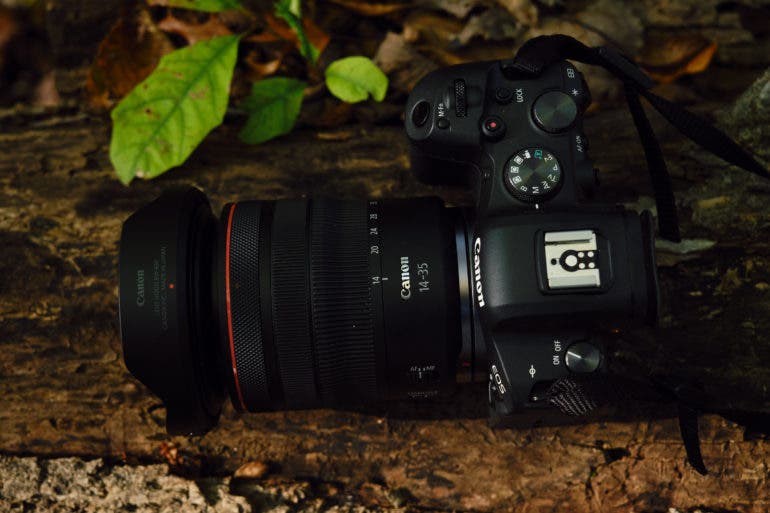
The Canon RF 14-35mm f4 L is refreshingly portable. It’s not a tiny pancake lens, sure, but it balances well on the beefy body of the R6. Weighing about 1.2 pounds, it feels great in the hands. It’s not obscenely long either and measures 4.25 inches. The lens extends just slightly as it zooms in and out, but the length change is minimal.
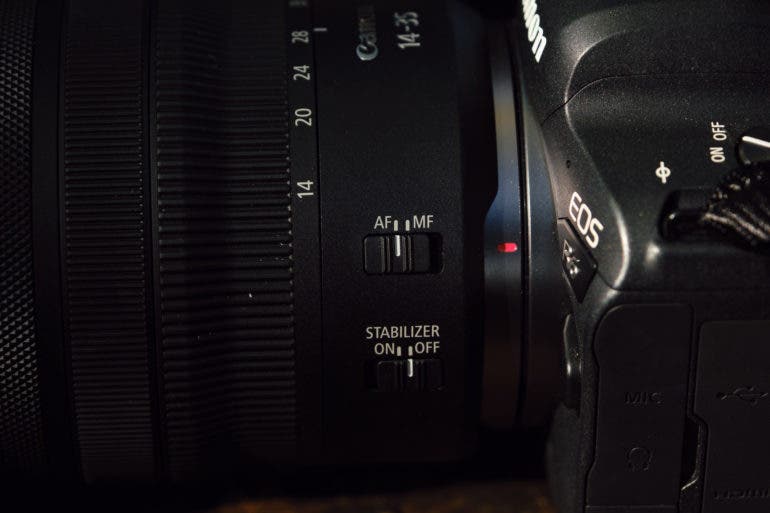
The lens has two switches close to the lens mount. The top is the AF-MF switch; the bottom a simple on-off switch. There’s no stabilizer mode switch. Canon says that the lens automatically detects panning.
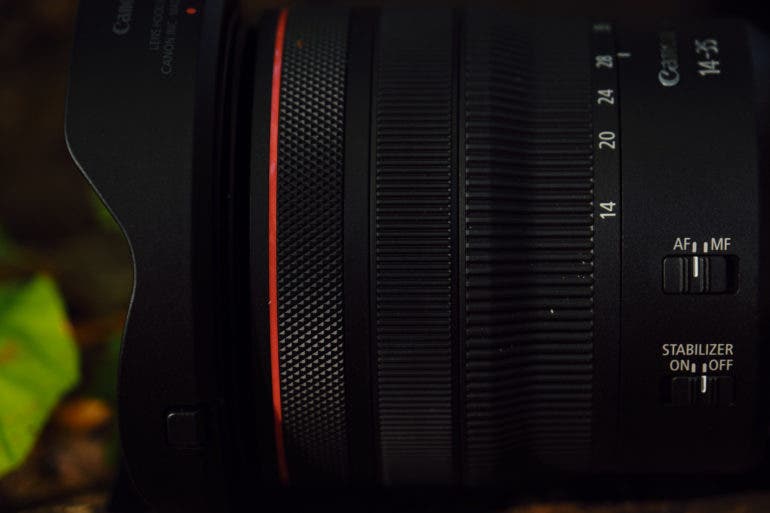
The first of three rings is the zoom. It’s wider than the other two and the only one that’s labeled. That’s followed by the focus ring. A third control ring sits at the end of the lens. This third ring has a click when it turns. This ring can be customized in the camera menu to control anything from aperture to exposure compensation. The texture is also different from the similarly-sized focus ring. With three rings right in a row, it takes a little time to reach for the correct one. But, the different sizes and textures, with some practice, will help Canon shooters grab for the right one.
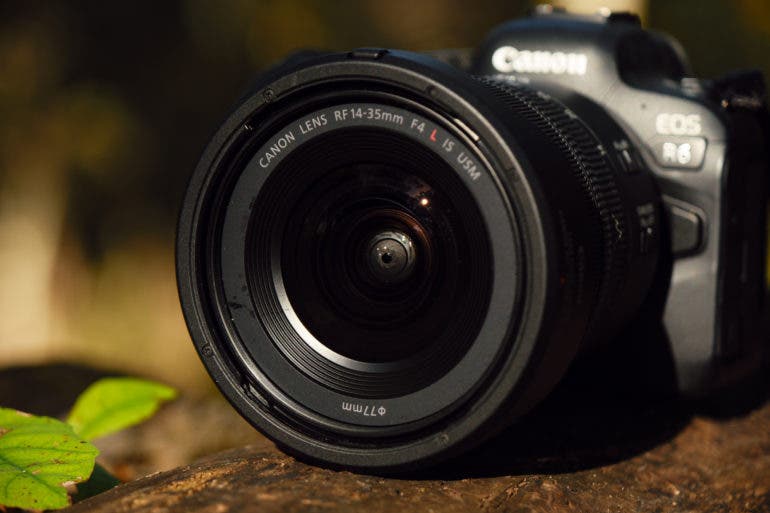
As an L series lens, the 14-35mm has that red ring at the front. It’s a design that works really well with the body of the R6. The front of the lens takes 77mm filters. There’s some plastic around the front though, and the actual glass isn’t that wide. You can see a lovely intricate pattern from the nine aperture blades at the front.
A short petal-shaped hood ships with the lens.
Build Quality
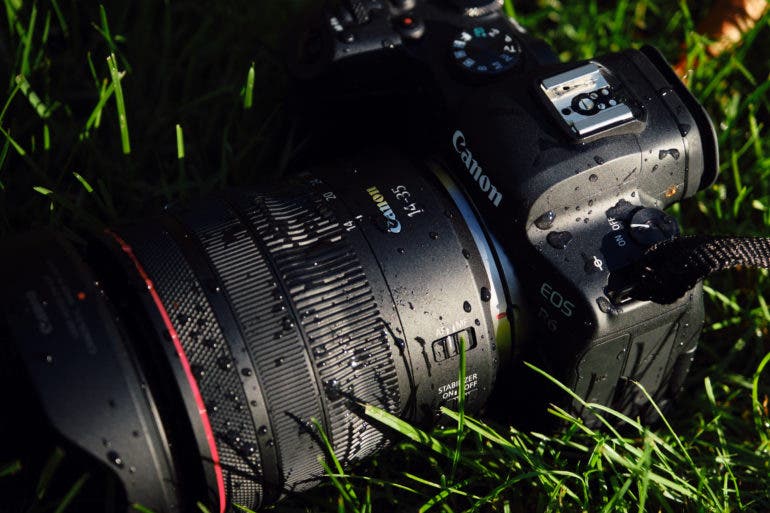
Landscape photographers can take this lens out in inclement weather. I set this lens in the dewy grass and splashed it with a water bottle. It acted like nothing had happened.
The weather-sealed plastic on the lens barrel feels exactly like the body material on the outside of the R6. It feels great in the hands and, even though the lens is relatively lightweight, it doesn’t feel cheap or flimsy.
Autofocus
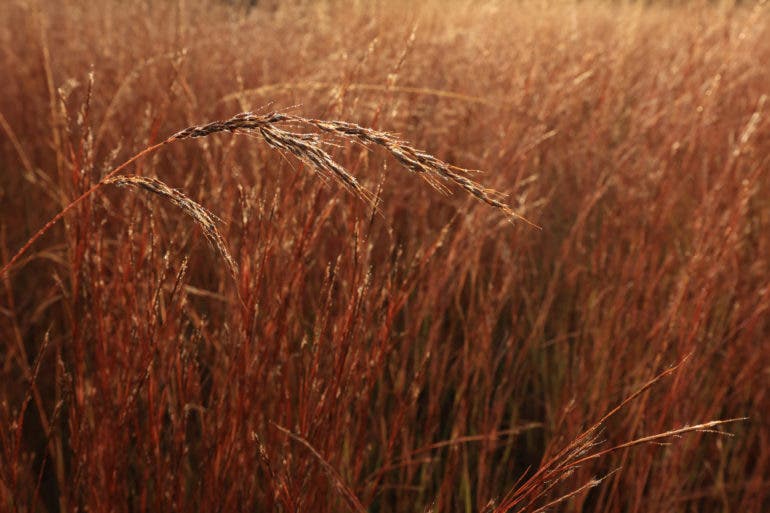
I wasn’t expecting such a wide-angle lens to be able to get in close. The Canon RF 14-35mm f4 L can focus as close as 7.9 inches from the focal plane. Adding in the length of the lens, you can get quite close. The close-up ability made this lens very fun to use. I could easily switch from landscape to close-up type shots.
Low-light autofocus was on par with what I expected on an f4 lens paired with the R6. It locked on to a landscape at sunset with the Zone AF area mode. In the dark, it could still autofocus on areas with a lot of contrast. For example, it locked on to headlights in the dark.
Wide-angle lenses aren’t made for fast action. Despite this, I still managed to get a few sharp shots of my dog running towards me before he got into the minimum focus distance. I don’t think the photographers looking for a 14-35mm are going to find fault with the autofocus in the types of subjects this lens was made for.
Ease of Use
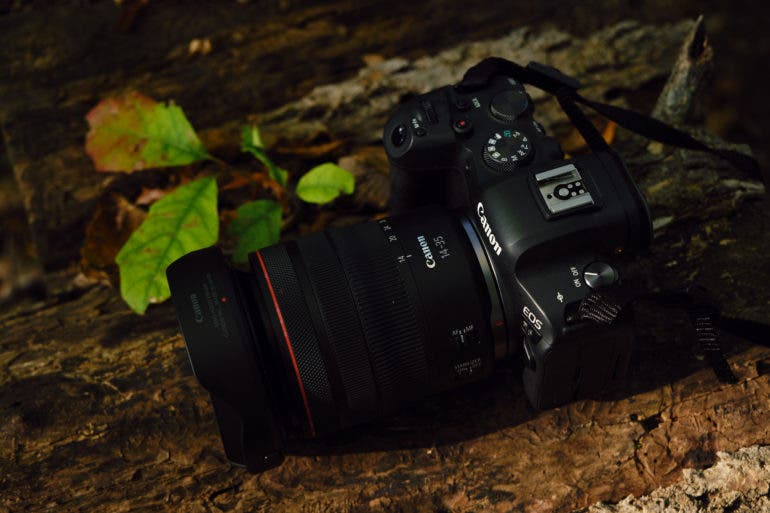
The most difficult part of using the 14-35mm is the bank of three control rings one right after the other. Some separation — like putting the switches in between two rings instead of near the mount — would have helped some. You have to go by the feel and texture of the rings to grab the right one. It will take a little practice. But, the different patterns on the grips and the click on the final ring will help. It’s just going to have a short break-in period.
The single-mode switch for the stabilization is simple to use as well. I often have to Google the different modes as a quick refresher on which one does what. This lens senses panning, Canon says, and I didn’t find anything to the contrary.
With stabilization, I could shoot at pretty low shutter speeds. At 35mm, I managed to get down to four seconds carefully bracing my elbows and holding my breath. If you are using the lens’ close-up capabilities, that exaggerates the shake. I could get the seven stops advertised with more distant landscapes, but close-ups were five stops or less. With close-ups, I could still get sharp shots at 1/4 at 35mm and 1.3 seconds at 14mm. If you want to shoot long exposures without a tripod, you’ll need patience, something to brace your elbows on, a few attempts, and a steady grip. But, it is possible and that stabilization makes the lens easier — and more fun — to use.
Image Quality

The Canon RF 14-35mm f4 L produces some lovely JPEGs with great color and sharpness. The RAW files show a bit of distortion without the lens profile available quite yet, but should with time have the same beauty with more flexibility. It certainly lives up to the L-line standard.
Bokeh
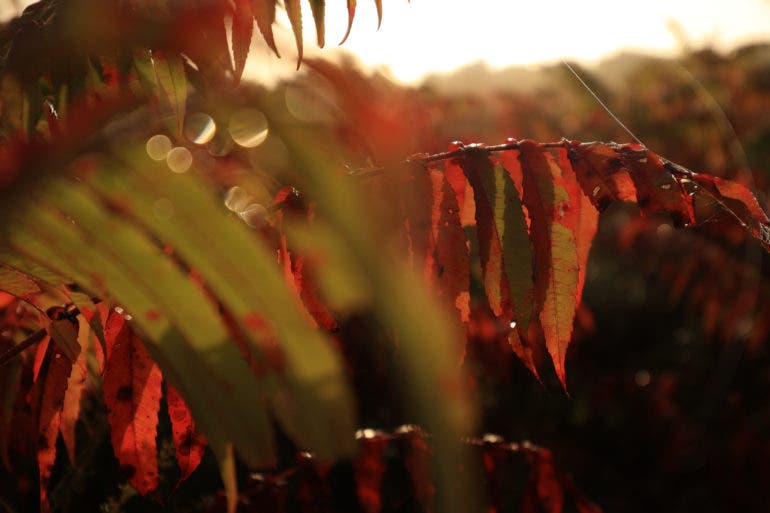
Ultra-wides aren’t known for their bokeh. But, get in close and you can certainly create some. Some of those bokeh balls have soft edges, some of them have a slight onion ring to them — especially from the smaller points of light. Dewdrops, for example, tended to create bokeh with more of an edge, while light filtered through trees had a soft edge.
Sharpness

This lens is super sharp, with only some slight loss of sharpness at the corners. The RAW files don’t look as sharp as the JPEGs, however, so this is another area where I’m eagerly waiting for Capture One and Lightroom to release support for the lens.
Lens Character
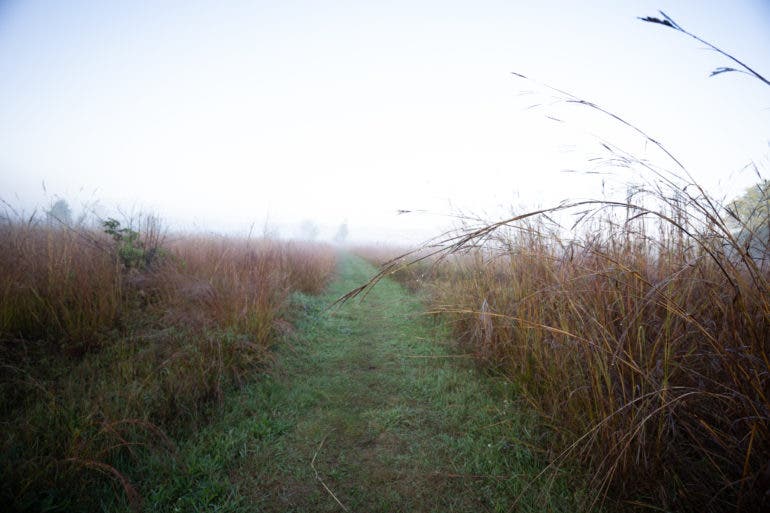
Switching from the JPEG to the RAW, there’s a lot of in-camera correction going on here. That’s to be expected with such a wide-angle. The corners are bent in at 14mm. There’s also a very strong vignette. Both of these are fairly well corrected with the in-camera processing on the JPEG files.
I did spot some occasional blue fringing around high contrast areas, largely when backlit by the sky. Chromatic aberration wasn’t otherwise easy to find.
I had to work hard to get this lens to flare. Pointed at direct sun, I could occasionally get a small streak or some spotty flare. Even then, the flare didn’t wreak havoc on the image’s contrast. The colors remained excellent, even with flare.
Color Rendering
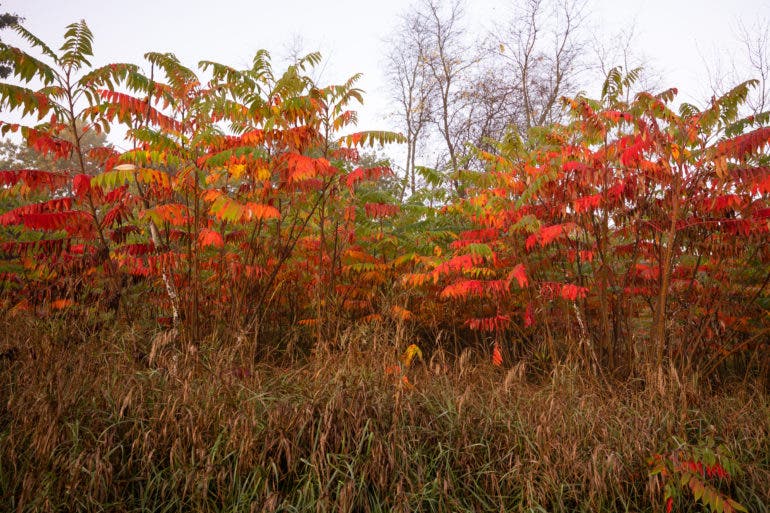
I set the in-camera color profile to landscape and really loved the color coming off the JPEGs. The few red leaves that I managed to find in what’s turning out to be a low color fall looked beautiful and vibrant. With an accurate white balance, color felt close to the actual scene.
Extra Image Samples
From day one, the Phoblographer has been huge on transparency with our audience. Nothing from this review is sponsored. Further, lots of folks will post reviews and show lots of editing in the photos. The problem then becomes that anyone and everyone can do the same thing. You’re not showing what the lens can do. So we have a whole section in our Extra Image Samples area to show off edited and unedited photos. From this, you can make a decision for yourself.
Edited
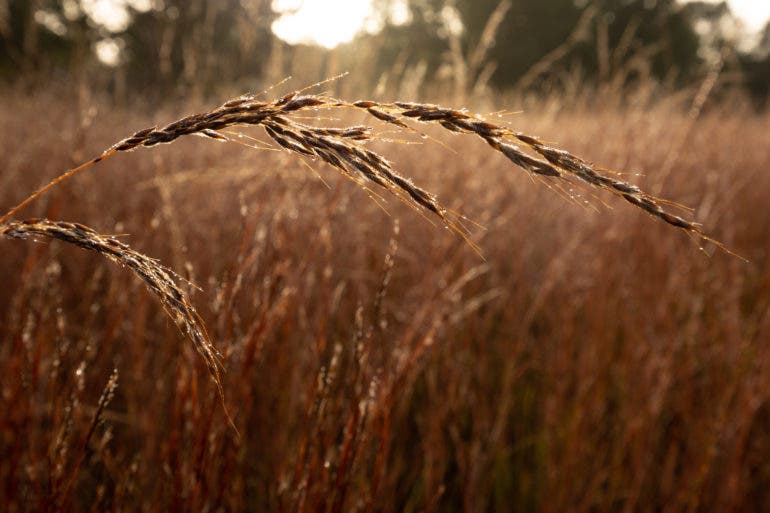
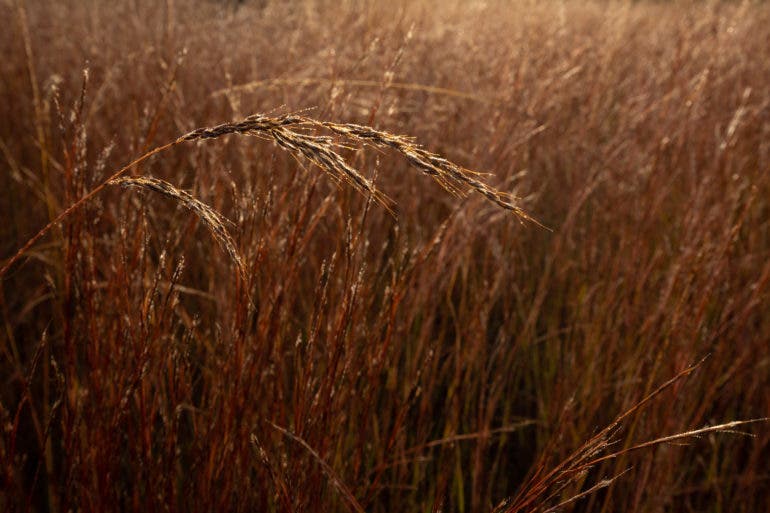
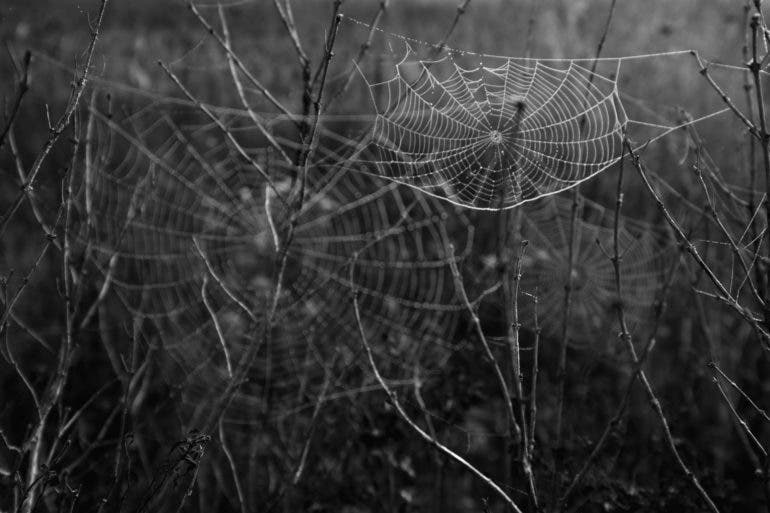
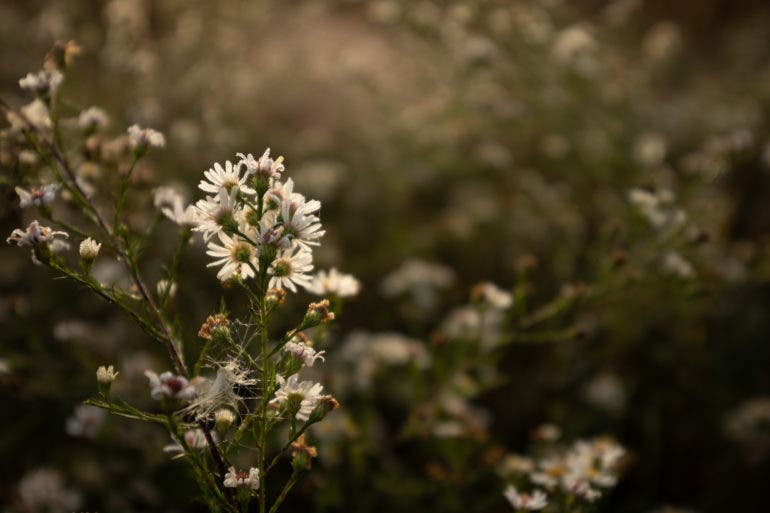
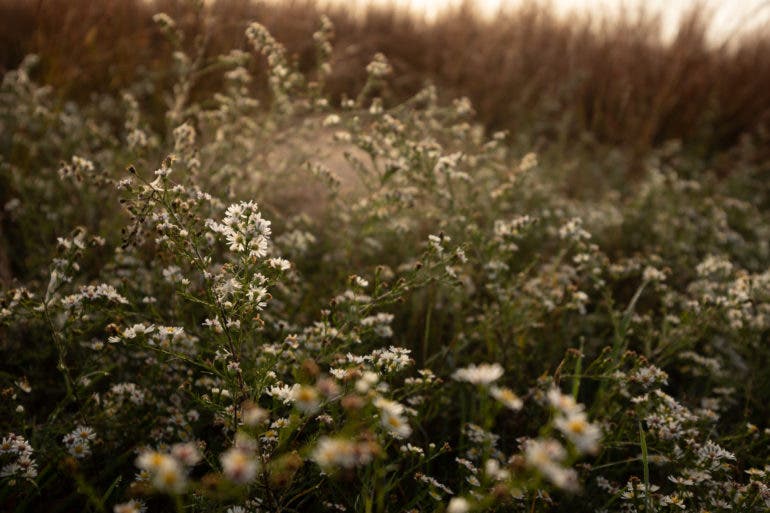
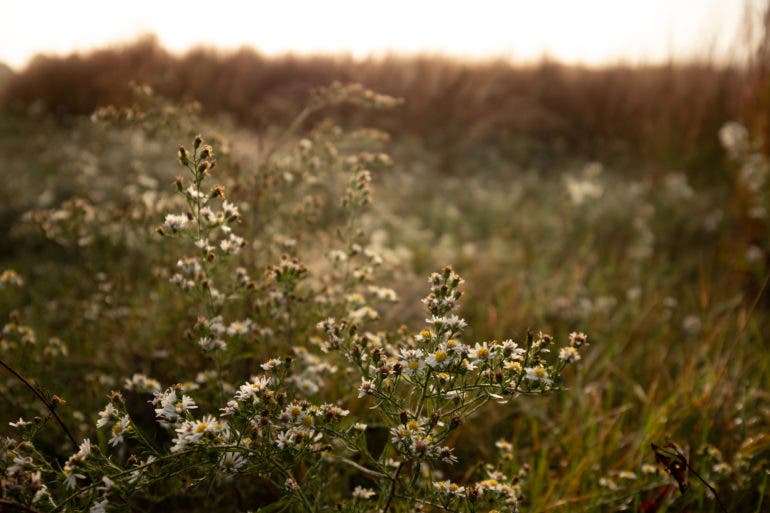

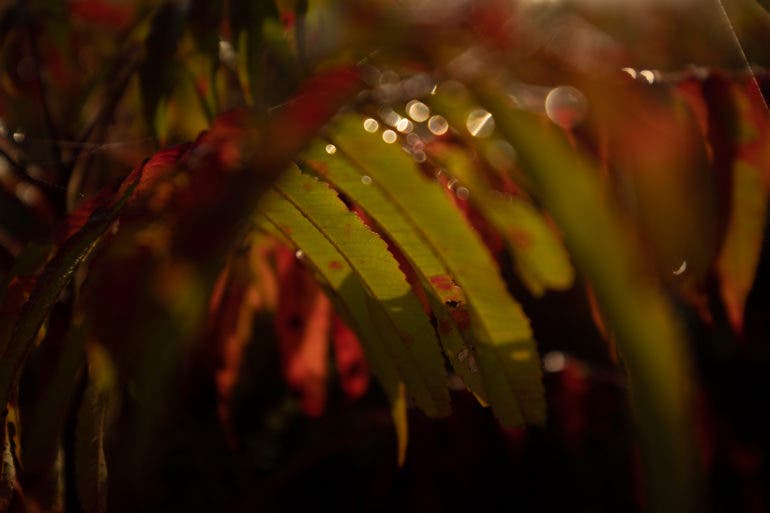


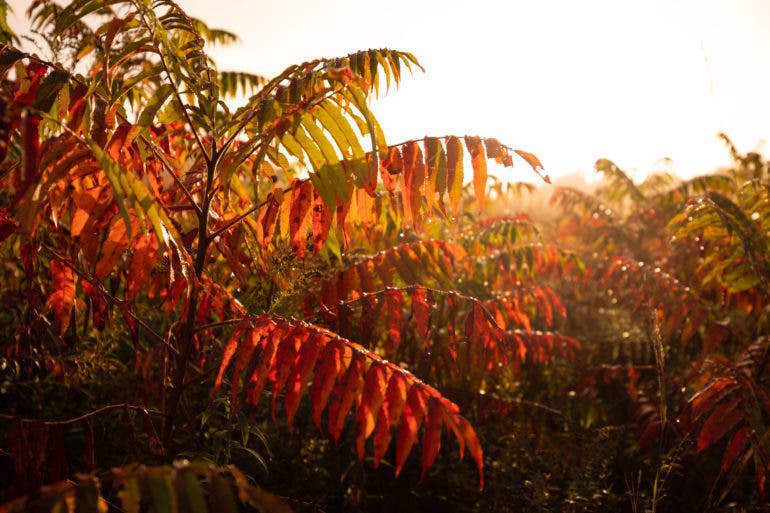
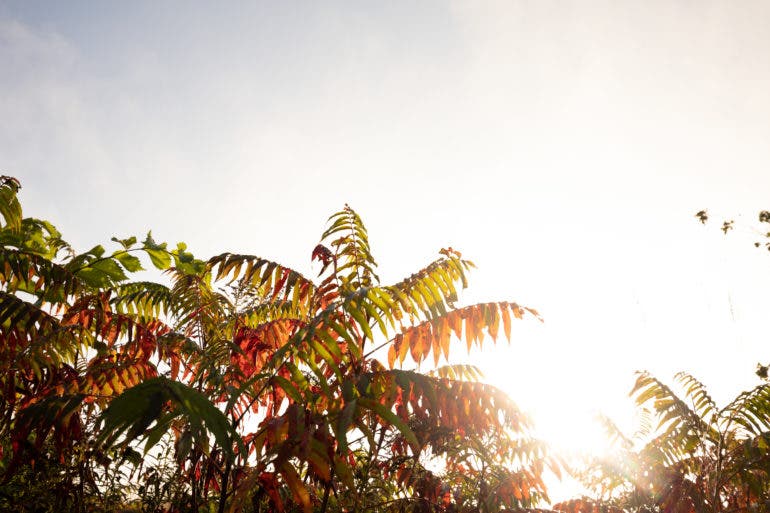
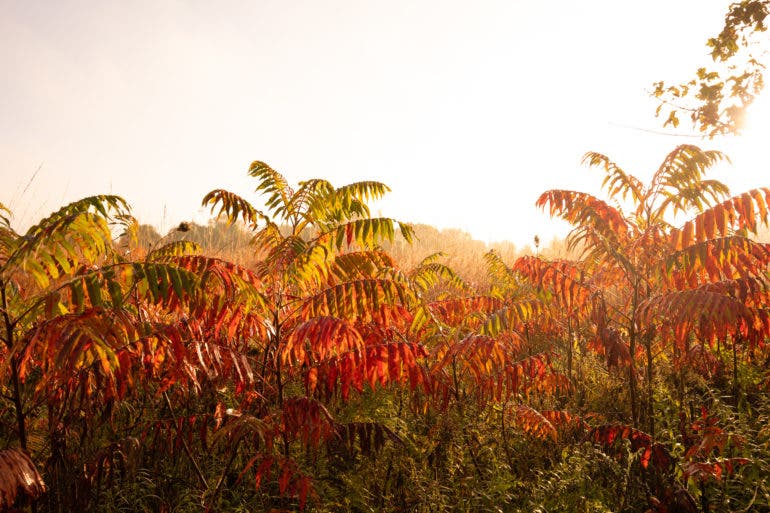

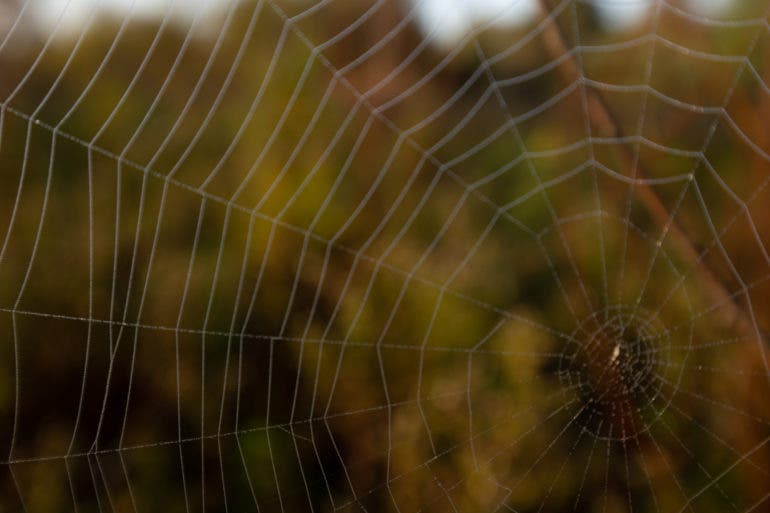
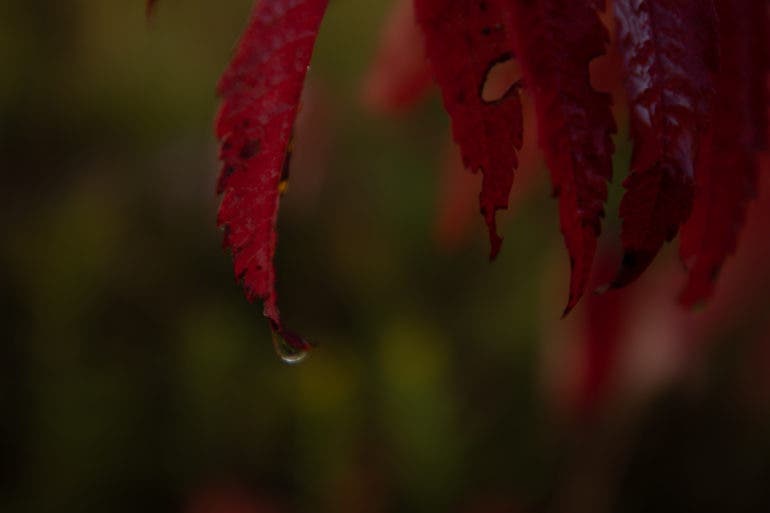

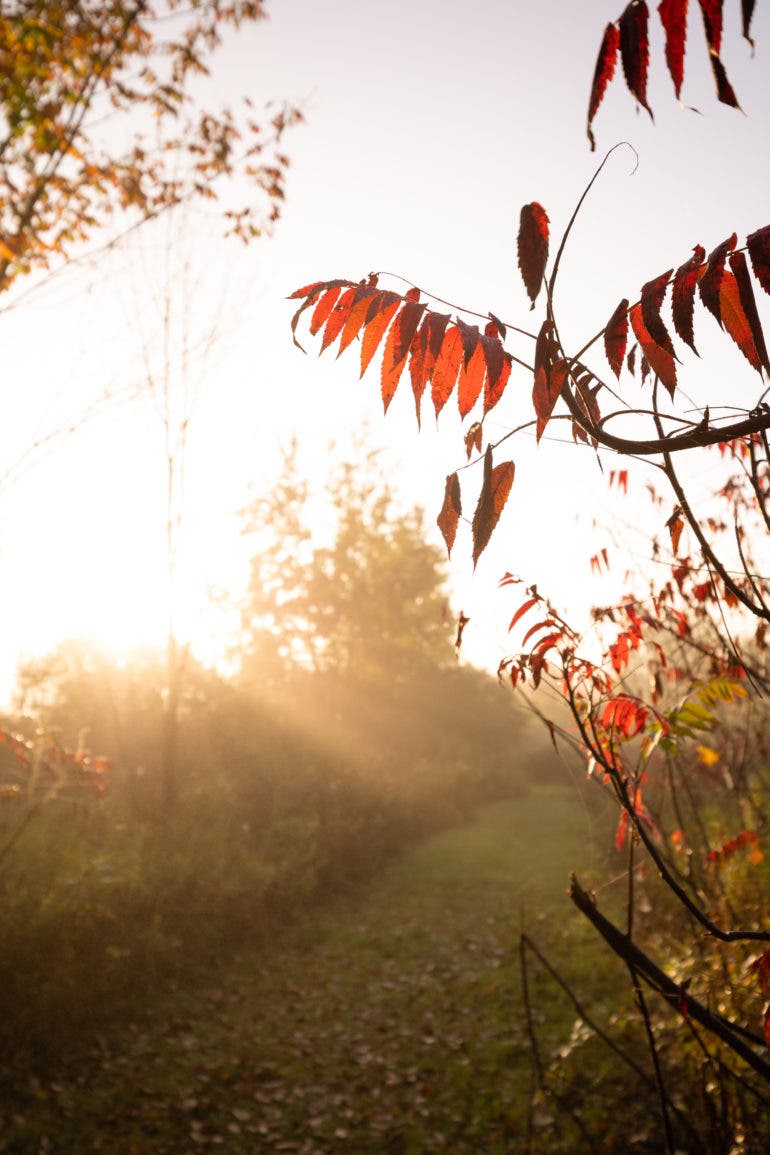
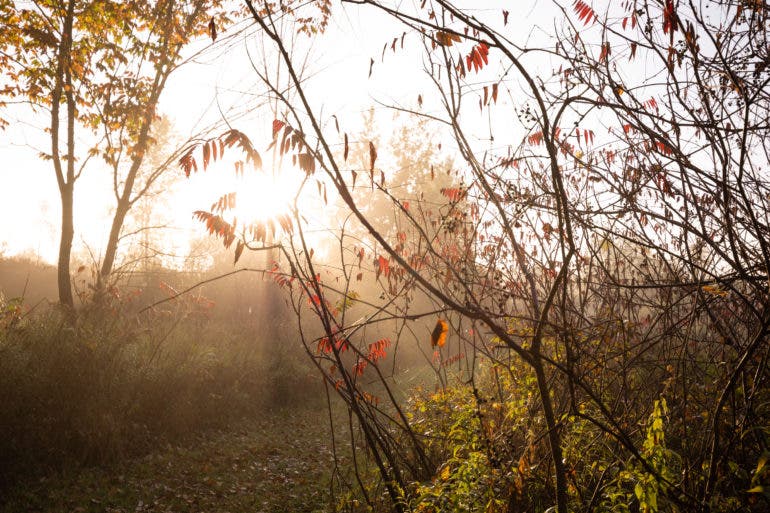
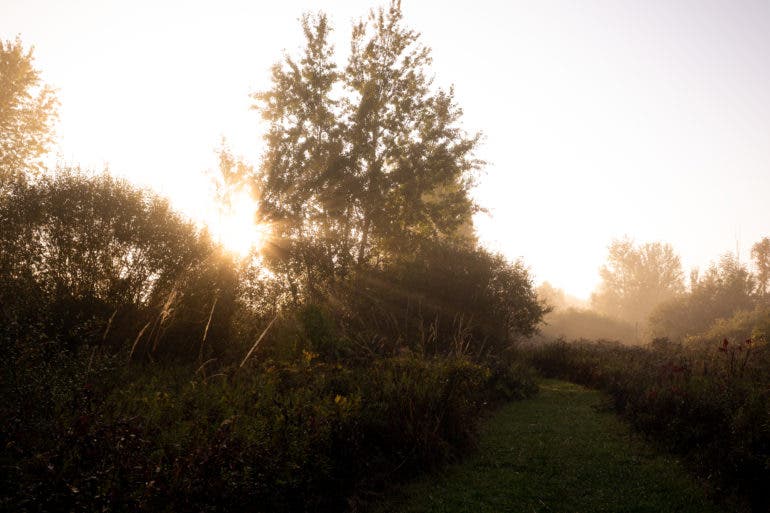
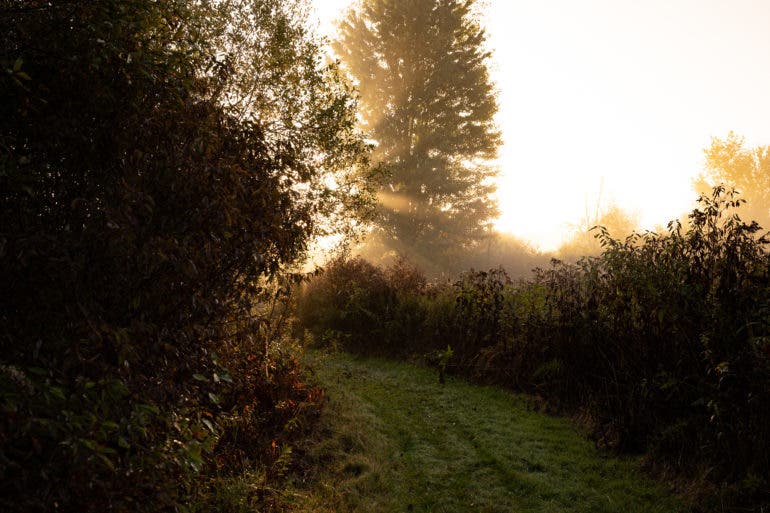
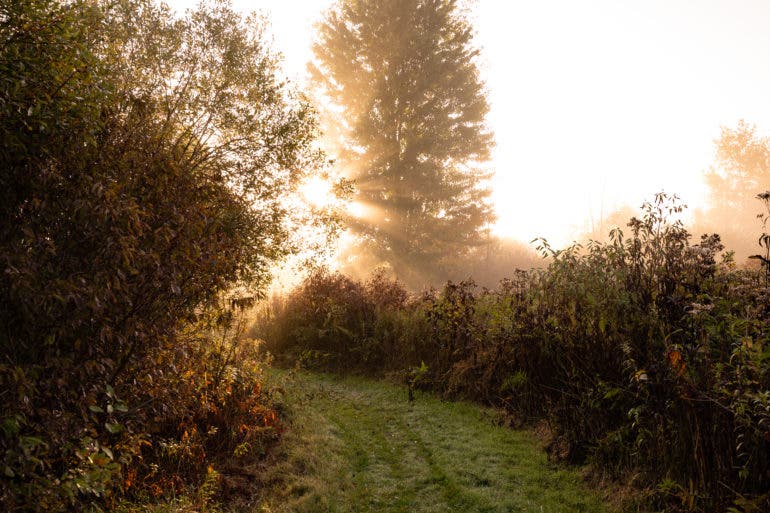

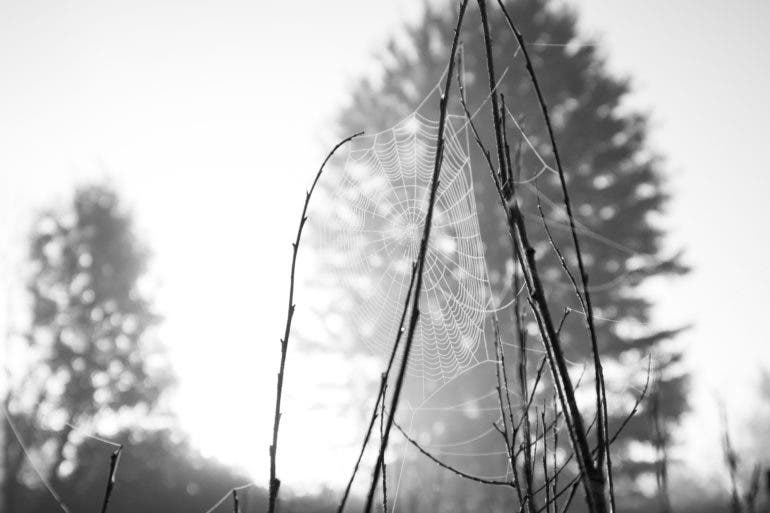
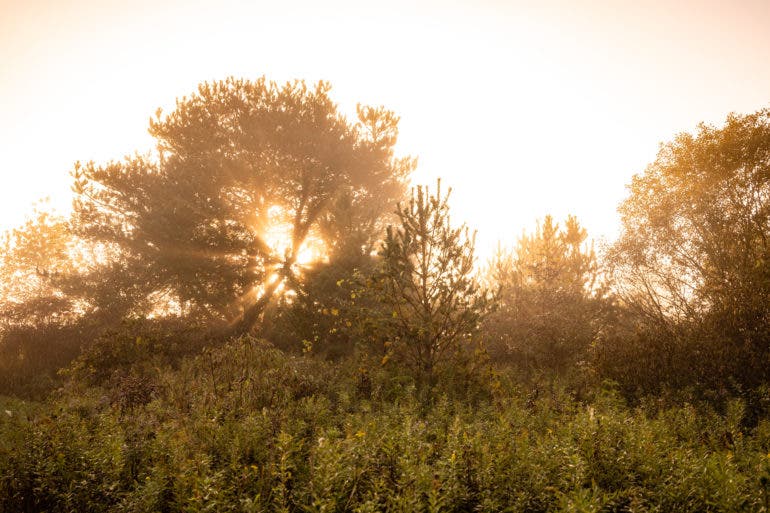
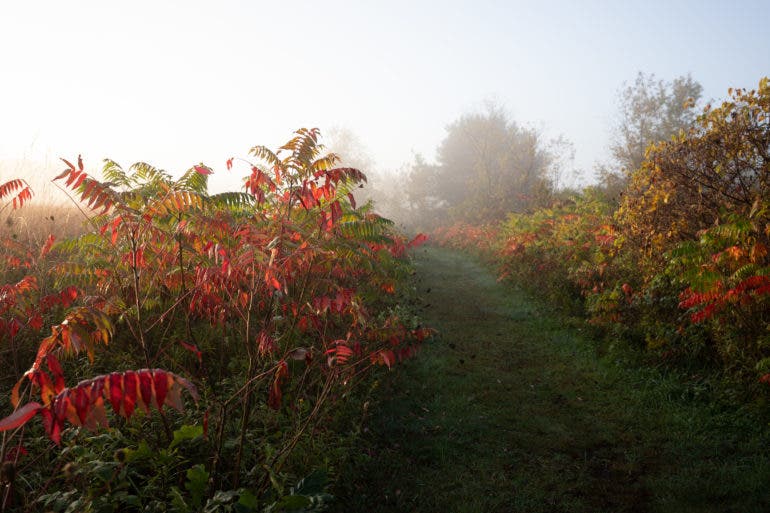
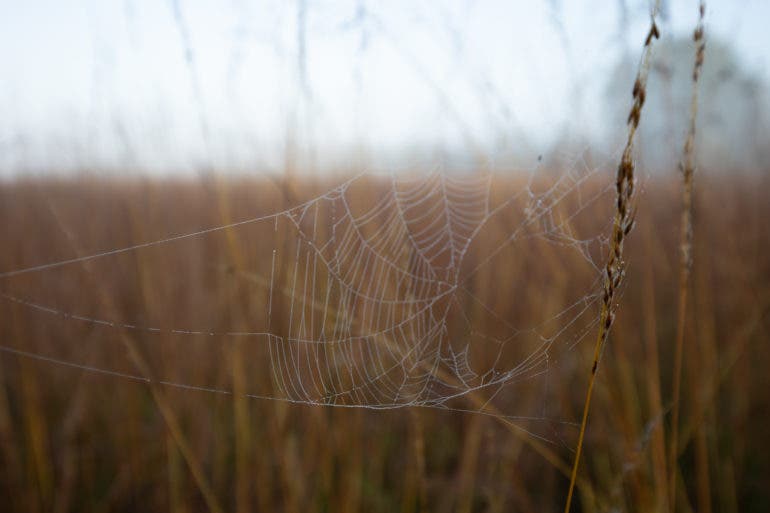
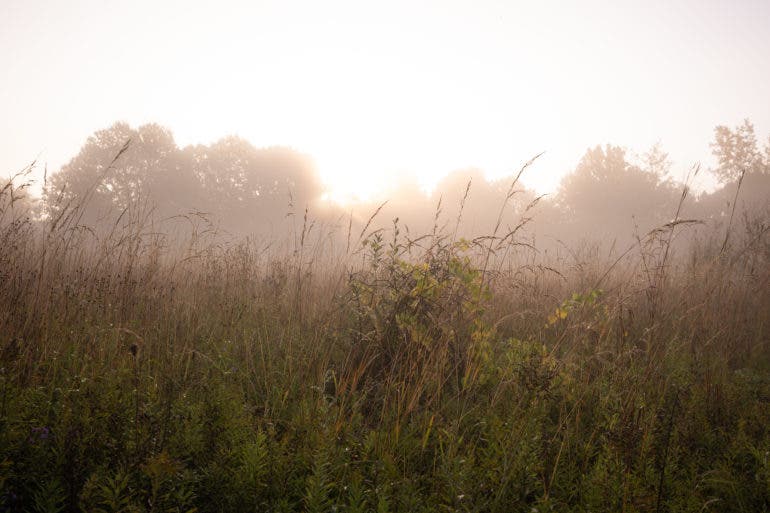
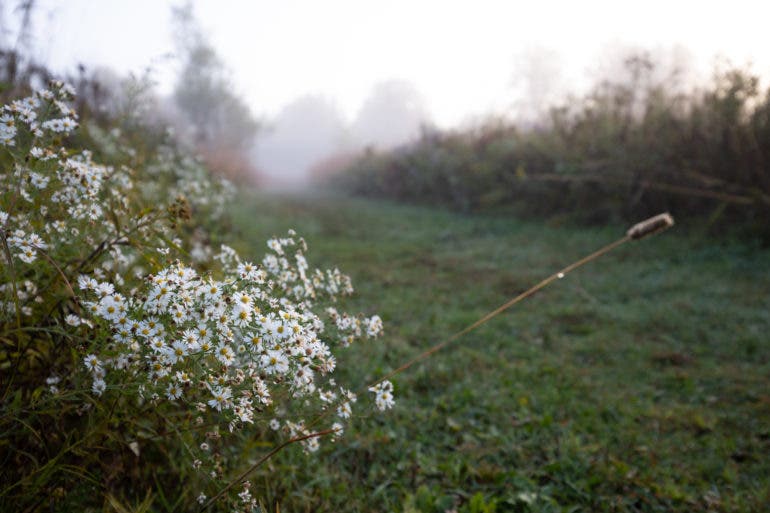
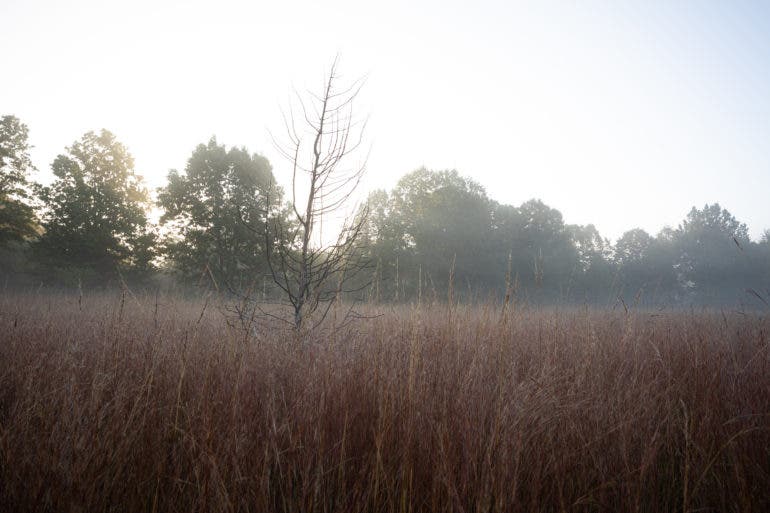

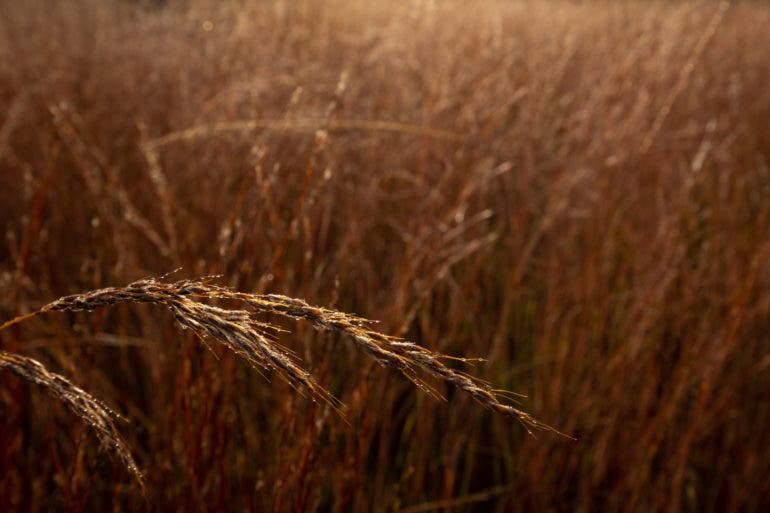
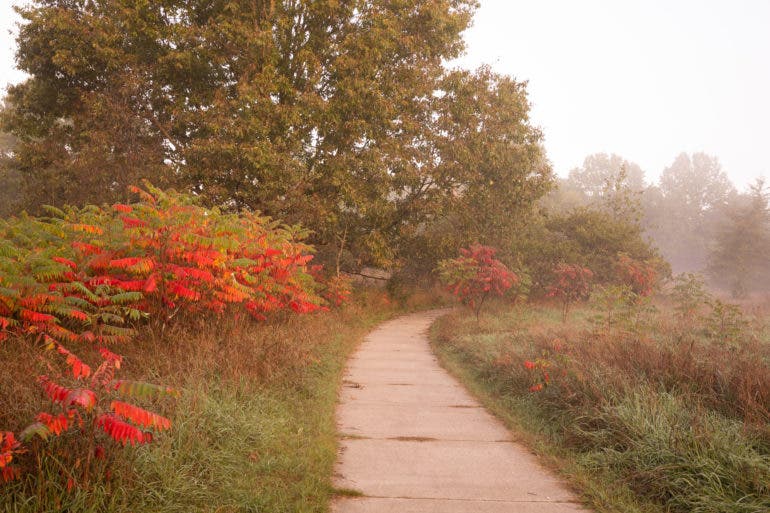
Unedited

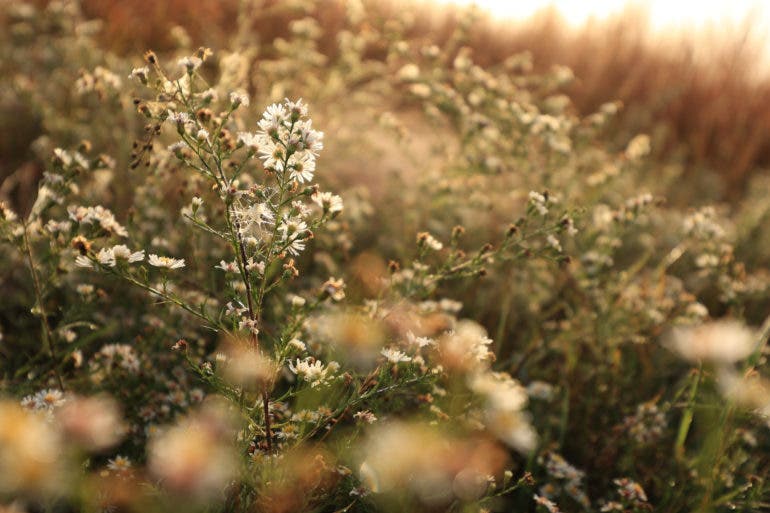
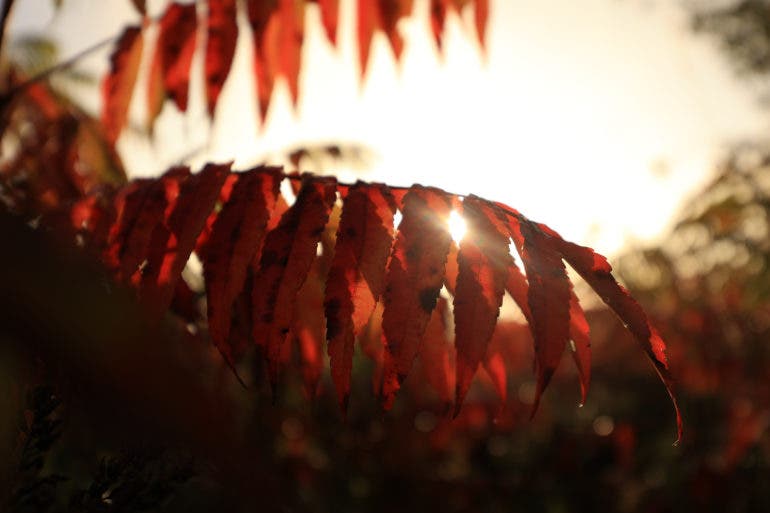
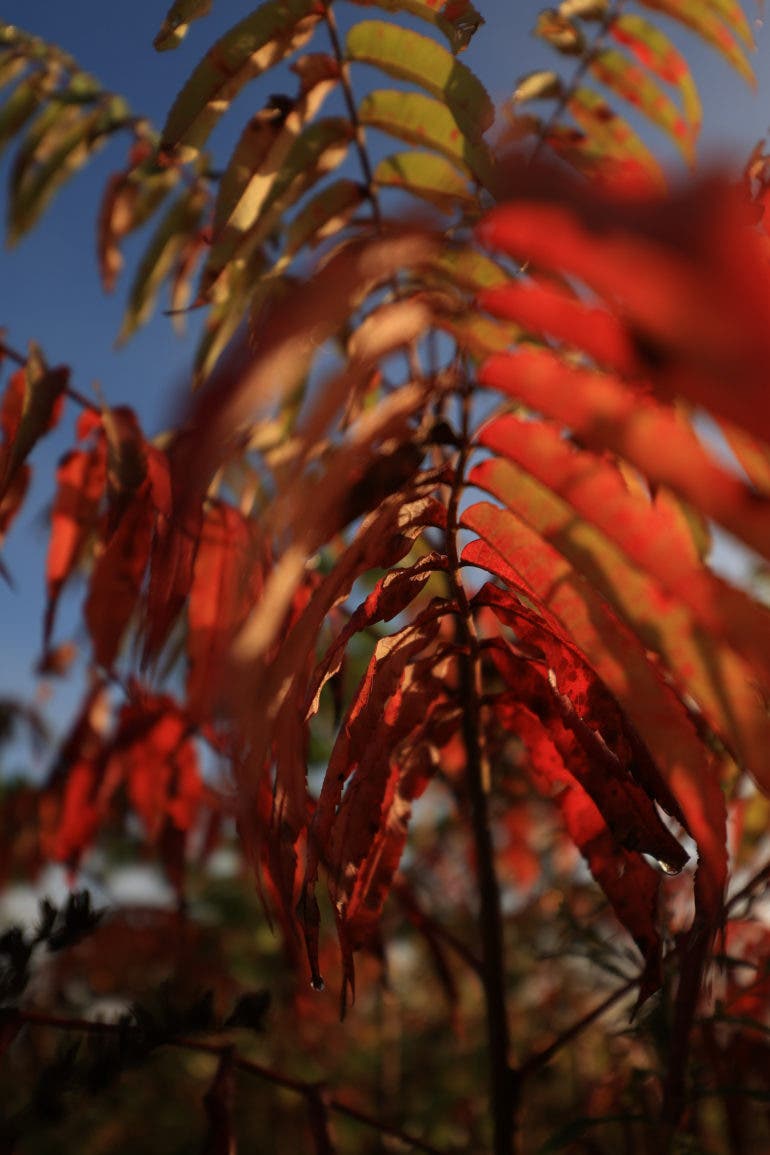

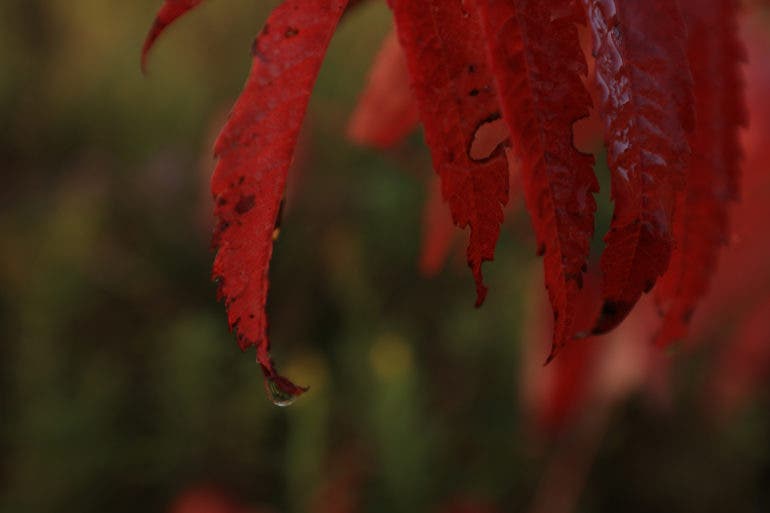
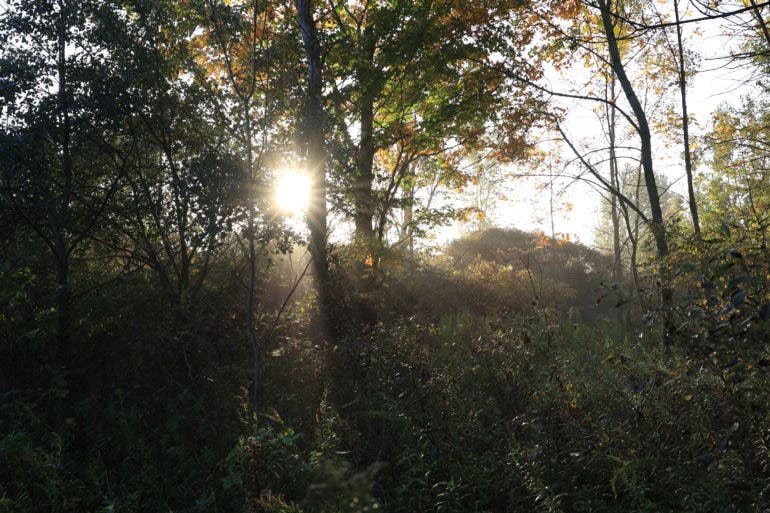
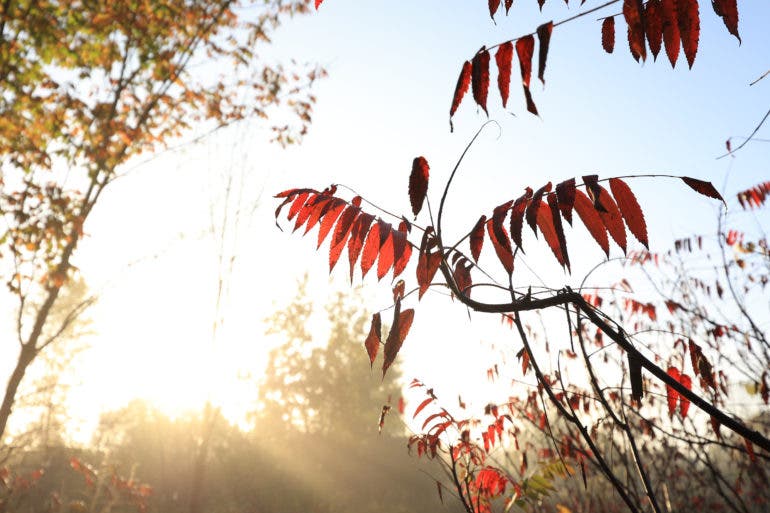
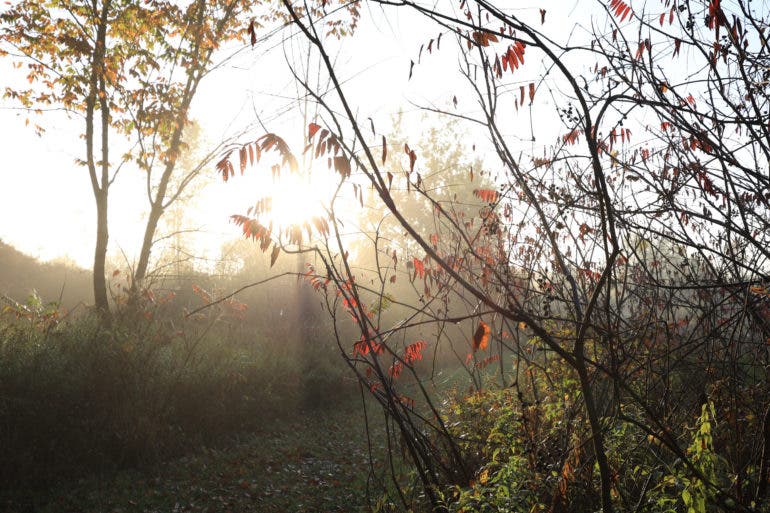
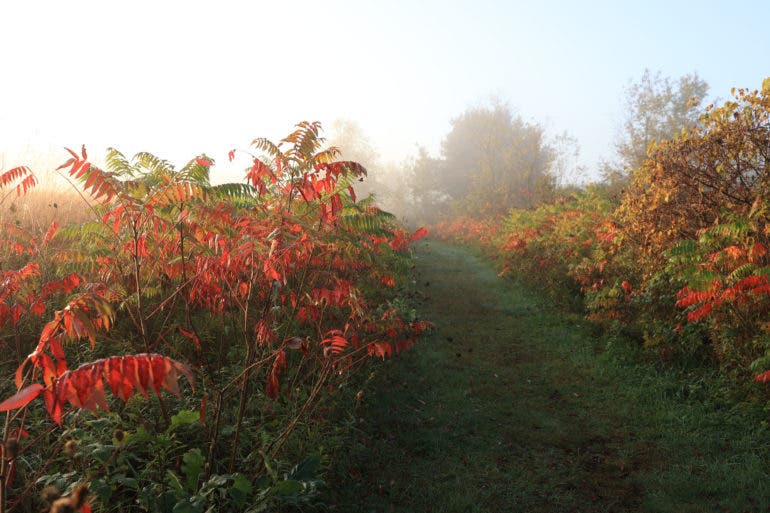
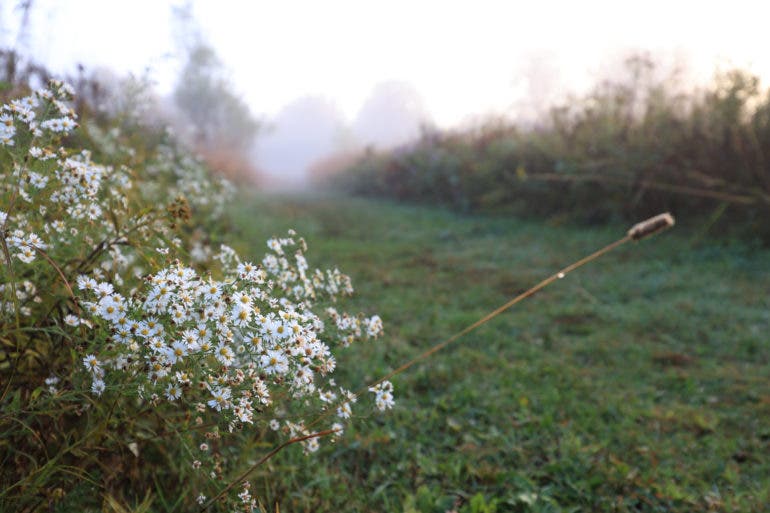
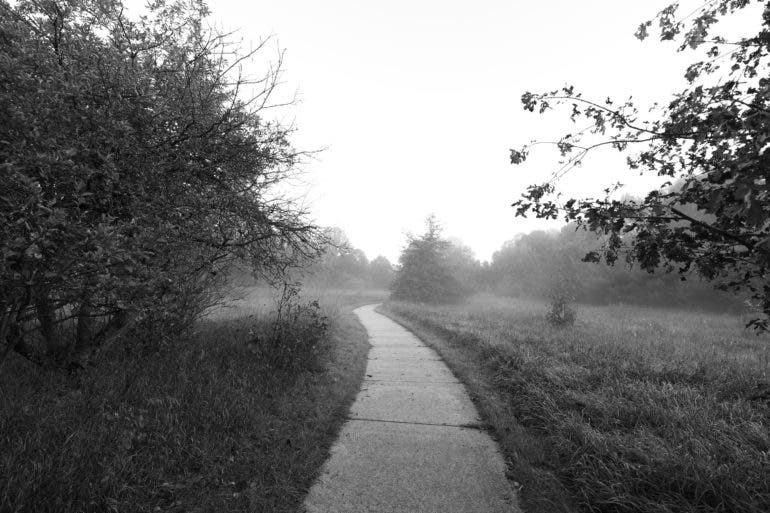
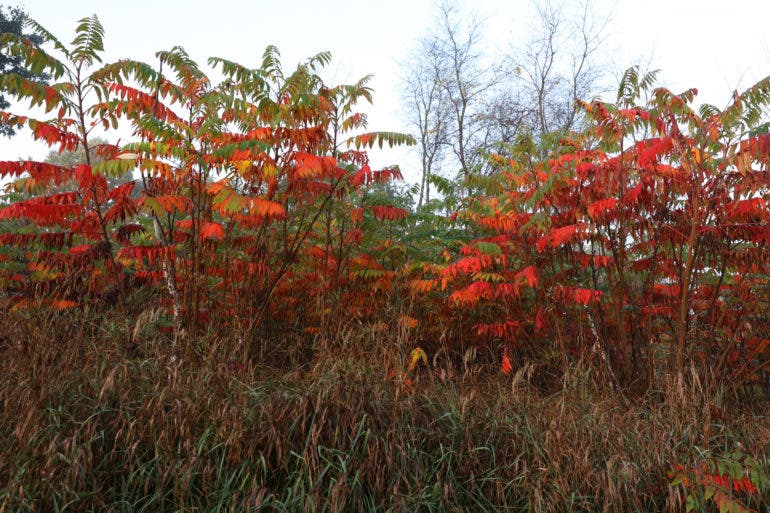
Conclusions
Likes
- I like the smaller form factor. It balances well with the body of the R6.
- It’s weather-sealed and feels durable.
- A rarity for an ultra-wide zoom, it’s stabilized to 5.5 stops (7 with IBIS).
- There’s a third control ring that can be custom set to control aperture, ISO, or other options.
- The colors coming from this lens are beautiful.
- The lens can focus pretty close.
Dislikes
- It’s not cheap.
- There’s some strong corner bending and vignetting at 14mm (and the profile for the RAW is not yet available in Lightroom or Capture One).
- The control ring placement could have been better.
The Canon RF 14-35mm f4 L is an excellent landscape lens. The lens captures beautiful color with minimal flare. Its built-in stabilization system allows for lower shutter speeds. With contrast, it can still focus in limited light. And, its lightweight and weather-sealed.
The 14-35mm’s main holdback is simply that the lens profile isn’t available yet in major photo editors. RAW photos at 14mm have some strong vignetting, corner bending, and reduced sharpness; the JPEGs look excellent. There is some occasional blue fringing on high contrast edges backlit by the sky. The three control rings right next to each other aren’t as intuitive to learn.
And, at $1,699, it’s not cheap. Paying that much for a zoom lens that’s not an f2.8 is going to be a tough decision. Canon’s EF mount equivalent is $600 cheaper.

But, the highlights overwhelmingly supersede the negatives. For that, I’m giving the Canon RF 14-35mm f4 L four out of five stars.